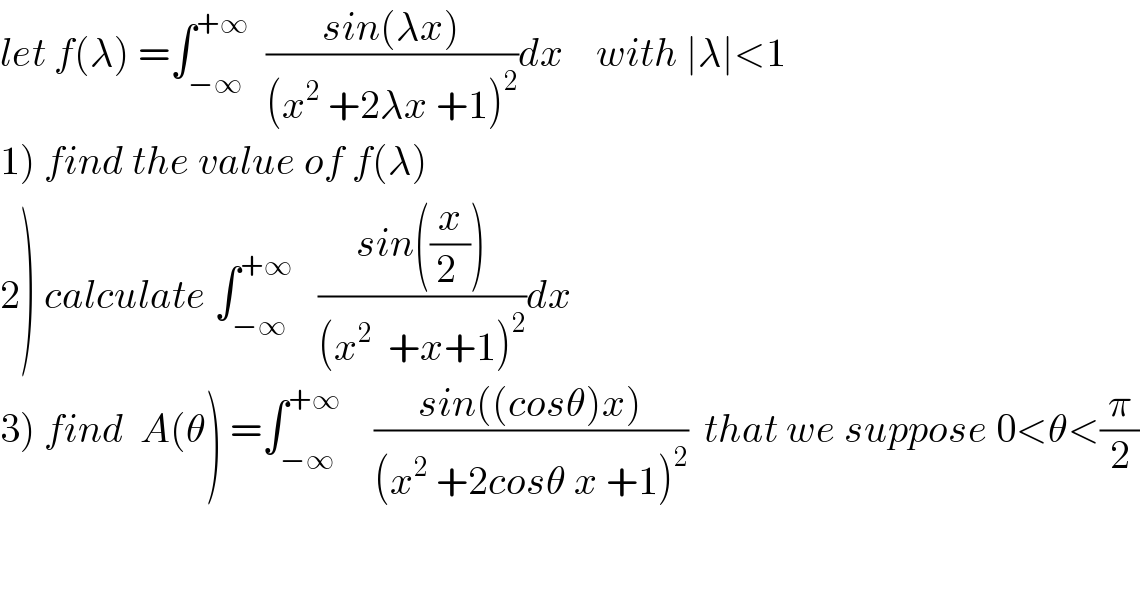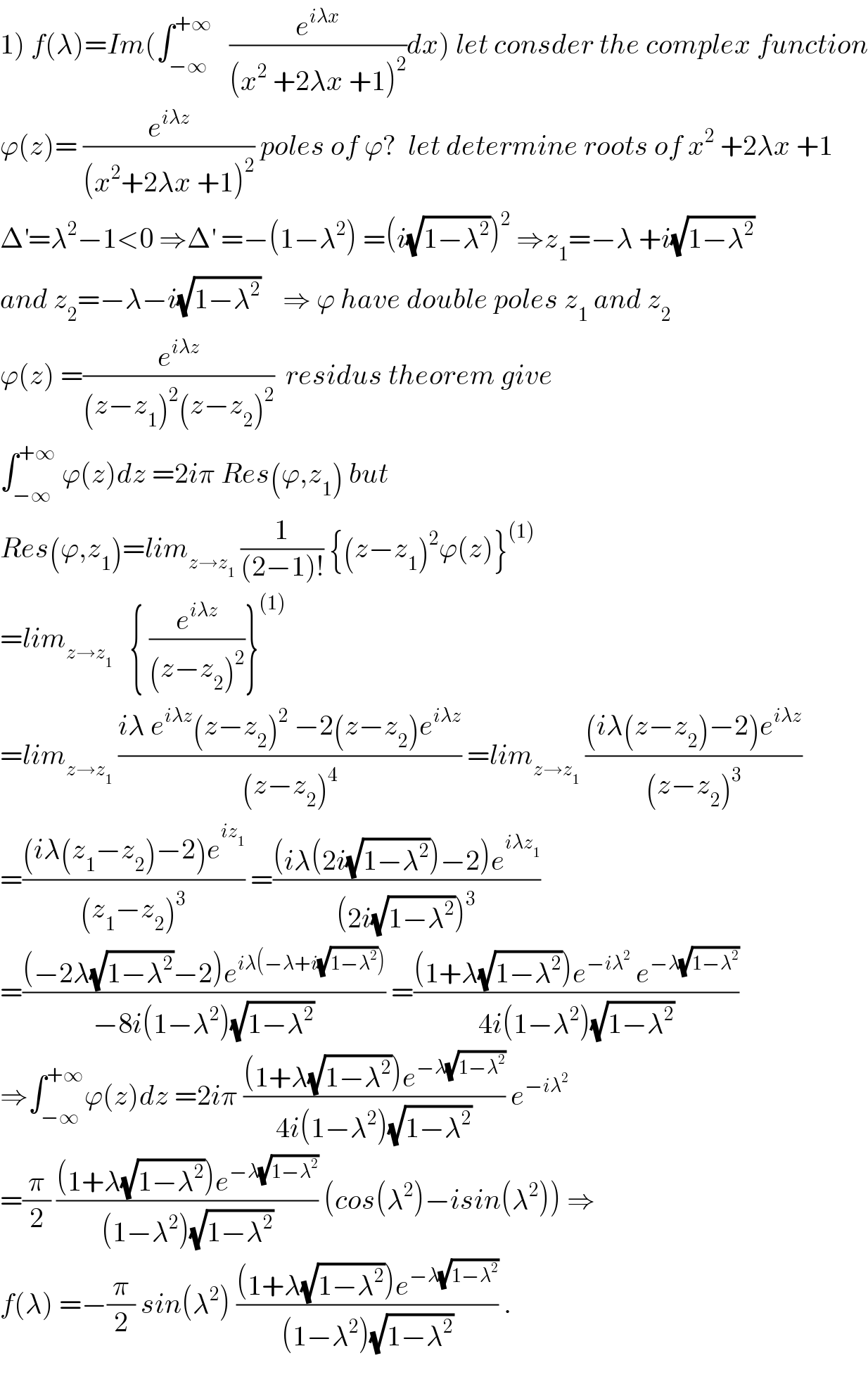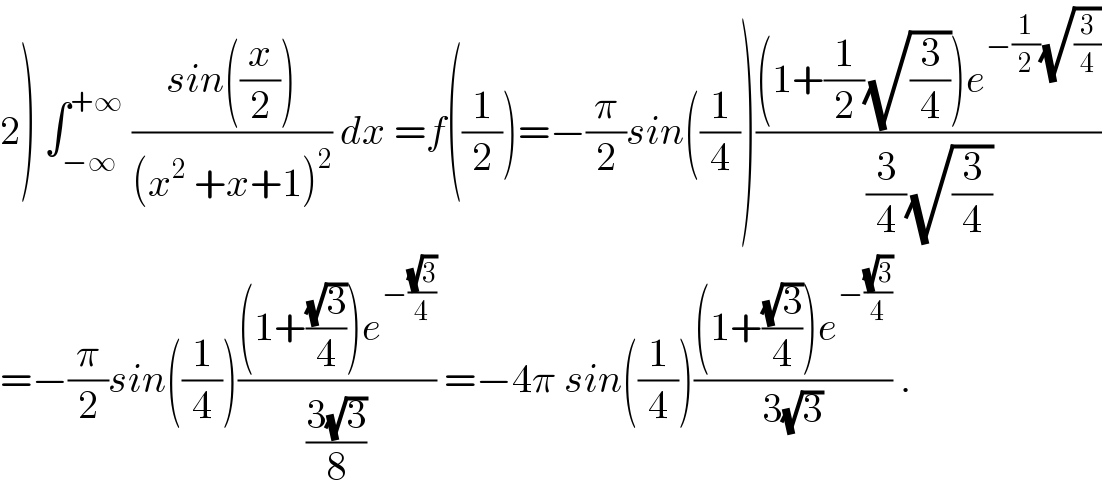
Question and Answers Forum
Question Number 52683 by maxmathsup by imad last updated on 11/Jan/19

Commented by maxmathsup by imad last updated on 13/Jan/19

Commented by maxmathsup by imad last updated on 13/Jan/19

Commented by Abdo msup. last updated on 13/Jan/19

